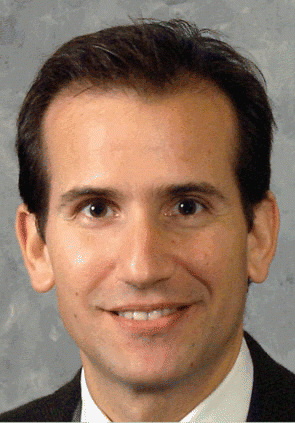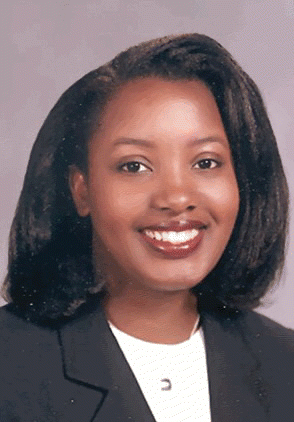CHICAGO-As evidence accumulates on the benefits and added value of videostroboscopy in the diagnosis of voice problems, many otolaryngologists are turning their attention to whether or not they want to invest in this technology-in terms of both the cost in buying the equipment and the time and skill needed to analyze correctly the many types of lesions one can see using this tool.
Explore This Issue
January 2009Participants at a miniseminar on laryngeal stroboscopy at the recent annual meeting of the American Academy of Otolaryngology-Head and Neck Surgery (AAO-HNS) were given a chance to assess for themselves the benefits of investing in videostroboscopy by listening to a number of presentations by experts in the use of this tool. Along with gathering information on the benefits and limitations, participants were able to get a hands-on feel of the challenges of differentiating lesions seen with this tool by viewing a number of video examples presented.
Benefits of Seeing-But What Is It?
When talking to colleagues who have not yet invested in videostroboscopy, Kenneth W. Altman, MD, PhD, Director of the Grabscheid Voice Center and an otolaryngologist at Mount Sinai School of Medicine in New York, explains that a valuable aspect of a videostroboscopy system is the ability to record and play back exams so that patients can see how their voice problems change over time. It is educational to show people what their vocal folds look like so they can understand, for example, what surgery can do for them, he said. They therefore are more invested in the treatment plan by seeing what the problem is.
Along with showing patients the changes in their vocal folds over time, videostroboscopy has the additional benefit of permitting the vibrational qualities of the vocal folds to be seen. This also helps to distinguish the type of lesion a person may have.
For example, said Dr. Altman, patients with early vocal fold cancer often present with some kind of mass sitting on top of the vocal fold. One could assume that the mass is only on the surface. Using videostroboscopy to look at the vibrational qualities of the vocal fold, however, can provide more information that could reveal that the lesion has infiltrated into the muscle and is therefore a more aggressive cancer than initially thought.
But it is this advantage-of improved visual display of the vocal folds and vibrational qualities-that also creates the main challenge of using this tool.
The big issue is how to analyze what you are looking at, said Dr. Altman, adding that it requires clinical acumen to be able to differentiate the type of lesion and source of problem amid all the detail provided by videostroboscopy. Added to this challenge is deciding what the appropriate nomenclature is for a given lesion-should it be called a polyp, a nodule, a cyst?
To prove his point, Dr. Altman asked each member of the panel-experienced users of videostroboscopy-to provide his or her assessment of stroboscopy findings on a number of visual examples he provided in his slide presentation. There was some discussion of different interpretations, and the overall point was that even for experienced users of stroboscopy, correct analysis of the lesions can be difficult.
Yolanda D. Heman-Ackah, MD, an otolaryngologist at Drexel University College of Medicine in Philadelphia, who moderated the session, agreed that the most difficult part of using stroboscopy is understanding which observed pathology is causing the patient’s voice complaint.
To help otolaryngologists use this instrument, Dr. Heman-Ackah emphasized the importance of a thorough history prior to its use. Otolaryngologists need to listen to the patient’s complaints thoroughly and have a keen understanding of the details of the voice complaint prior to performing the stroboscopy, she said. This will allow the otolaryngologist to develop a differential diagnosis prior to performing the stroboscopy and to use the findings to confirm or deny these diagnoses.
Donna Lundy, PhD, Co-Director of the Vocal Disorders Laboratory in the Department of Otolaryngology at the University of Miami Leonard M. Miller School of Medicine, also emphasized that stroboscopy should be considered one of many components of a comprehensive voice evaluation and that interpretation of the results should be in conjunction with the rest of the evaluation.
Along with providing details about vocal fold vibrations, she also discussed the advantage of stroboscopy in providing better details about glottal closure. For example, she emphasized the benefit of knowing the degree of incomplete glottal closure, as that helps to determine whether the problem can be improved with voice therapy alone or if surgery is needed.
 It is educational to show people what their vocal folds look like so they can understand, for example, what surgery can do for them. They therefore are more invested in the treatment plan by seeing what the problem is.
It is educational to show people what their vocal folds look like so they can understand, for example, what surgery can do for them. They therefore are more invested in the treatment plan by seeing what the problem is.
-Kenneth W. Altman, MD, PhD
Ready for Prime Time?
For Dr. Altman, who specializes in voice and swallowing problems, videostroboscopy is an essential tool in his practice. He thinks that, to date, most people currently using videostroboscopy are those with a special interest in the voice. These specialists are investing not only in the new technology, he emphasized, but also in the educational process needed to support the use of the technology. This lifelong learning, he said, represents what most otolaryngologists are devoted to.
For otolaryngologists not specializing in voice problems, he recommends they use videostroboscopy in their practices, but thinks this will take more time to gain popularity.
I think the growth [of using this technology] is not a mushrooming growth, he said, but a gradual growth, as we would expect for otolaryngologists who are devoted to lifelong learning.
Just Around the Corner: High-Speed Laryngeal Imaging
Although videostroboscopy has still to make its way into the hands of many otolaryngologists, right on its heels is an even more advanced imaging technology that will raise similar questions about investment and use.
Seen as an adjunct to videostroboscopy, high-speed laryngeal imaging allows for imaging of vocal fold vibration in real time. The imaging uses high-speed cameras to capture images at a rate of 2000 to 8000 frames per second without the need for periodic vibration to capture the image. This overcomes the limitation of videostroboscopy, which only provides a virtual representation of vocal fold vibrations said Katherine A. Kendall, MD, Director of the Voice Clinic at the Minneapolis VA Medical Center.
Although Dr. Kendall does not think that high-speed laryngeal imaging will replace videostroboscopy, she said that one benefit it will provide beyond videostrobscopy is to permit evaluation of vocal fold vibrations in patients with aperiodic vibration, tremor, and laryngeal spasms-patients traditionally not able to be evaluated with videostroboscopy.
 Otolaryngologists need to listen to the patient’s complaints thoroughly and have a keen understanding of the details of the voice complaint prior to performing the stroboscopy.
Otolaryngologists need to listen to the patient’s complaints thoroughly and have a keen understanding of the details of the voice complaint prior to performing the stroboscopy.
-Yolanda D. Heman-Ackah, MD
One exciting potential area that high-speed laryngeal imaging may play a key role in is detection of behavioral contributions to laryngeal pathology. The potential for using high-speed imaging to improve our understanding of how various behavioral and soft tissue abnormalities impact vocal fold vibration is extremely exciting, she said.
©2009 The Triological Society
Leave a Reply